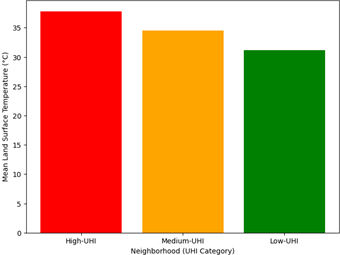Influence of Urban Microclimates and Green Spaces on Social Isolation: Evidence from High-Density Urban Neighborhoods
Keywords:
Urban Microclimate, Urban Heat Island, Social Isolation, Outdoor Activity, Urban PlanningAbstract
Urban microclimates, particularly urban heat islands (UHIs), can significantly influence residents’ outdoor activity patterns and social interactions, contributing to social isolation. This study investigates the relationship between localized urban temperatures, shaded areas, and social isolation among 450 residents in [City Name]. A cross-sectional survey captured social isolation levels and outdoor activity, while Geographic Information Systems (GIS) and satellite imagery assessed vegetation cover, shaded areas, and land surface temperatures. Results indicate that high-UHI neighborhoods exhibit elevated temperatures (M = 37.8°C) and higher social isolation scores (M = 18.7), with residents reporting reduced frequency of outdoor social interactions (1.7 days/week). Conversely, neighborhoods with abundant shaded areas and green spaces showed lower social isolation (M = 11.8) and increased outdoor activity (4.5 days/week). Regression analyses demonstrated that both UHI intensity and shaded area availability significantly predicted social isolation (Adjusted R² = 0.48, p < 0.001), with green infrastructure mitigating the adverse effects of heat. Subgroup analyses highlighted that older adults and women were particularly vulnerable in high-UHI, low-green neighborhoods. These findings underscore the importance of integrating green spaces and shade into urban design to enhance social well-being, foster community interactions, and create more resilient urban environments. The study provides actionable insights for urban planners, policymakers, and public health practitioners aiming to improve the livability of dense urban areas.

